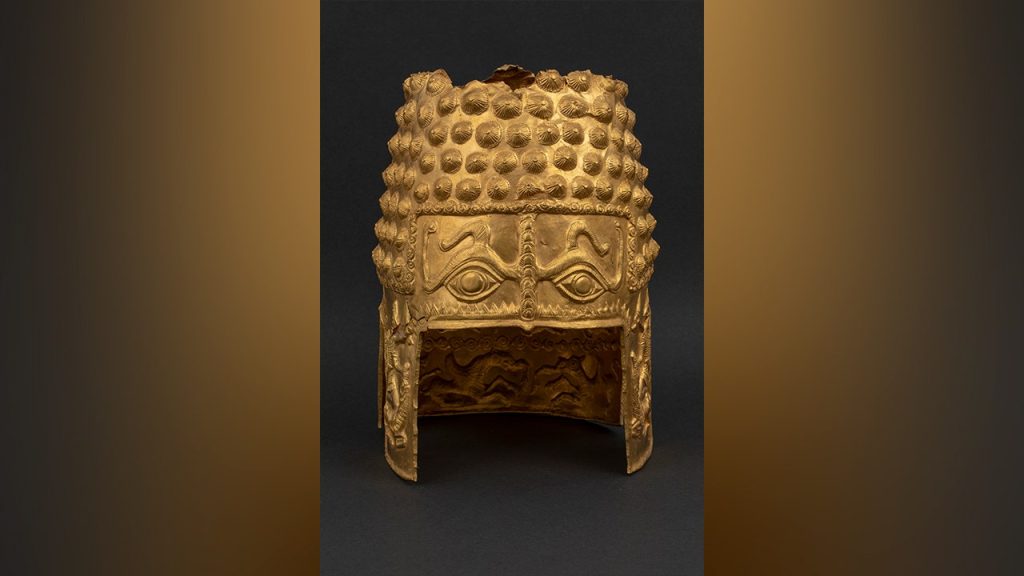The theft of the Coțofenești helmet and three accompanying golden wristbands from the Drents Museum in the Netherlands sent shockwaves through the art world and sparked outrage in Romania, the artifacts’ country of origin. The heist, which occurred on the final weekend of a six-month loan, targeted priceless relics of the ancient Dacian civilization, dating back approximately 2,500 years. The intricate golden helmet, a cultural icon of Romania, holds immense historical and symbolic significance for the Romanian people. Its disappearance, along with the wristbands, has left a void in the nation’s cultural heritage and fueled concerns about the security of loaned artifacts in international museums.
Dutch authorities swiftly launched an investigation into the theft, arresting three suspects and holding them for interrogation. While the arrests offer a glimmer of hope, the whereabouts of the stolen artifacts remain unknown. The Drents Museum, facing criticism for its perceived lax security measures, expressed cautious optimism about the potential recovery of the items, emphasizing the importance of their return undamaged, both for the museum and the Romanian people. The museum’s reputation has undoubtedly been tarnished by the incident, raising questions about its ability to safeguard precious artifacts entrusted to its care.
The theft highlights the vulnerability of cultural treasures, even in seemingly secure environments. The Coțofenești helmet, a renowned symbol of Romanian identity, was on loan to the Dutch museum, presumably under the assumption that it would be protected by robust security protocols. The incident underscores the need for enhanced security measures in museums worldwide to prevent such thefts and protect invaluable cultural heritage from falling into the wrong hands. The Romanian government, devastated by the loss, expressed the profound emotional and symbolic impact of the artifacts’ disappearance on Romanian society, emphasizing their irreplaceable value to the nation’s heritage.
The circumstances surrounding the heist raise several questions about the motives of the perpetrators. The helmet’s fame and distinctive appearance make it easily recognizable, rendering it virtually impossible to sell on the open market. This raises the unsettling possibility that the thieves were primarily interested in the intrinsic value of the gold itself, potentially intending to melt it down. Such an act would represent a devastating loss of cultural and historical significance, reducing a priceless artifact to mere bullion. While the monetary value of the gold is substantial, estimated at around 85,000 euros per kilogram, it pales in comparison to the immeasurable cultural value of the helmet as a testament to ancient Dacian civilization.
The theft of the Coțofenești helmet serves as a stark reminder of the ongoing threats to cultural heritage, particularly in a world increasingly driven by profit and disregard for historical significance. The incident underscores the need for international cooperation to combat art theft and protect cultural treasures for future generations. It also highlights the importance of thorough due diligence when loaning artifacts to foreign institutions, ensuring that adequate security measures are in place to prevent such devastating losses. The recovery of the helmet and wristbands remains a top priority for both Dutch and Romanian authorities, who are working tirelessly to bring the perpetrators to justice and retrieve the stolen artifacts.
The repercussions of this theft extend beyond the immediate loss of the artifacts. It has damaged the reputation of the Drents Museum, strained relations between the Netherlands and Romania, and cast a shadow over the international community’s efforts to safeguard cultural heritage. The incident serves as a wake-up call for museums and cultural institutions worldwide to re-evaluate their security protocols and invest in robust protective measures. It also underscores the need for greater public awareness of the importance of preserving cultural heritage and the devastating consequences of art theft. The Coțofenești helmet, once a symbol of Romanian national pride, now represents a tragic loss and a stark reminder of the fragility of cultural treasures in a world where greed and disregard for history can prevail. The hope remains that the artifacts will be recovered and returned to their rightful home, restoring a piece of Romania’s cultural heritage and serving as a symbol of resilience in the face of adversity.















